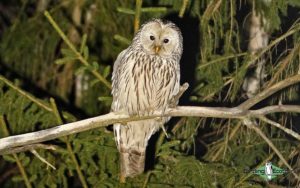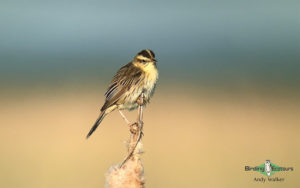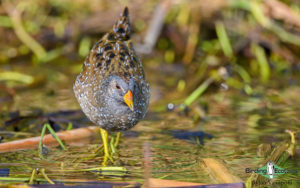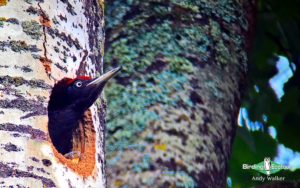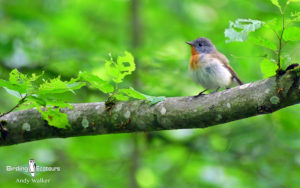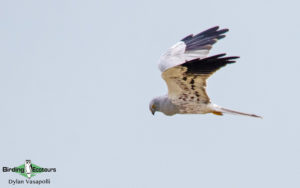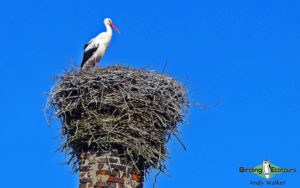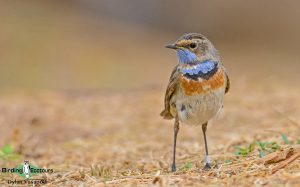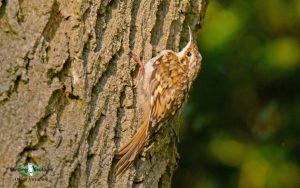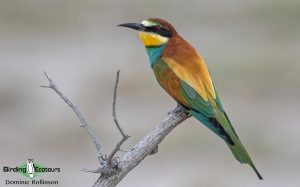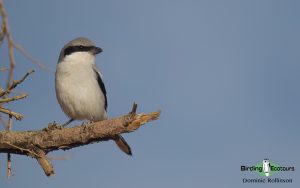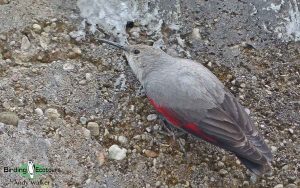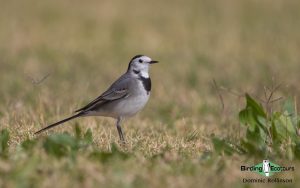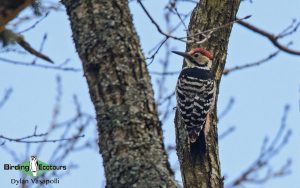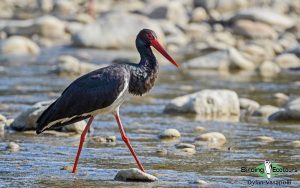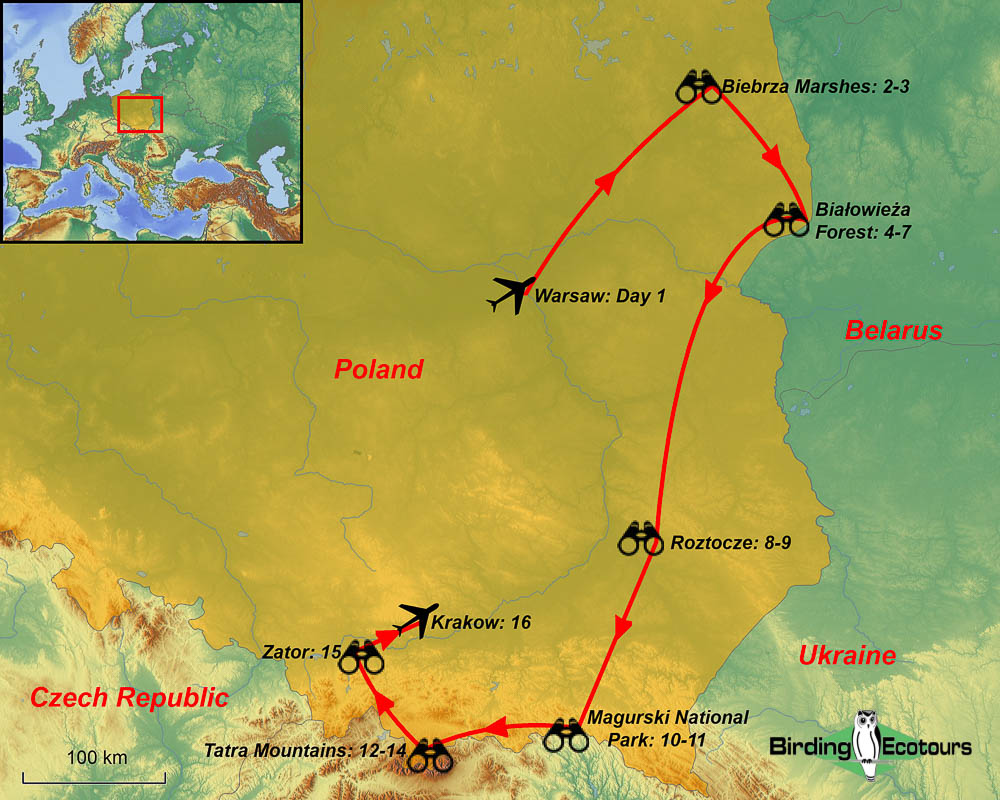Poland: Best of Eastern Europe
Go to: Poland Birding Tours | Birding Tours in Europe | All our birding tours
Poland: Best of Eastern Europe
Due to the current situation in neighboring Ukraine, we have suspended our Poland set departure tours until the region stabilizes. If you’d like to register your interest in this great birding tour, please contact us and we will let you know when we are planning to resume our tours.
In this Poland: Best of Eastern Europe tour, we will visit the best birding locations that eastern and southern Poland have to offer, which we actually rate as some of the best birdwatching in the whole of Europe. During this exciting small group tour, we will explore vast river floodplains with bird-rich marshes, stunning primeval ancient woodlands, spectacular forested mountains and high peaks, and small-scale farmland, all dotted with quaint traditional villages that combine to give the feeling of stepping back in time several hundred years. We will spend time in and around these quiet, charming villages, where the wildlife will be right on our doorstep, adding to the fantastic experience we will have in Poland. We are sure you will love this tour as much as we do!
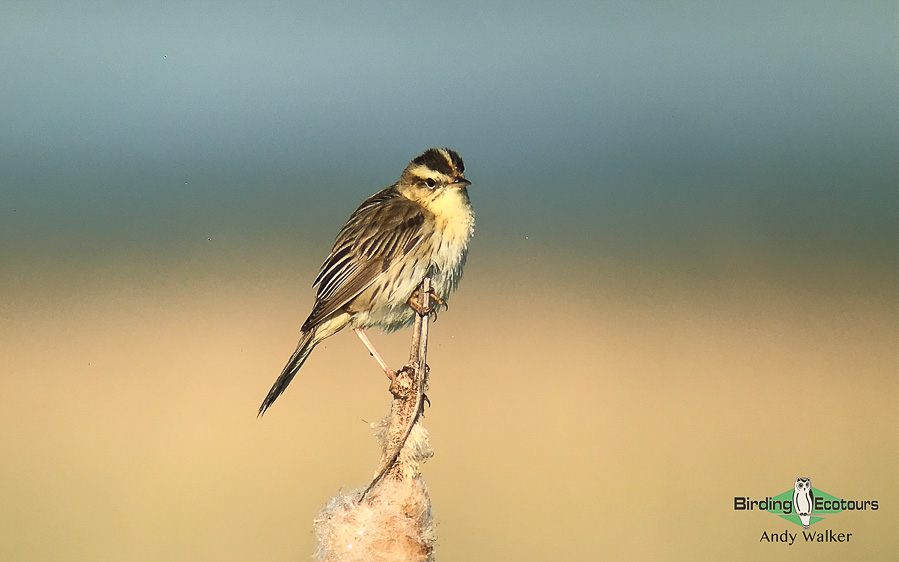
Poland is one of the best countries for birding in Europe, ranking as one of our favorite destinations, and for good reason! Following International Ornithological Congress (IOC) taxonomy (v13.1 in July 2023) the bird list of Poland stands at a whopping 485 species, with a good number of these being highly sought-after by world birders. Poland is the best country in the world for seeing the rare Aquatic Warbler and Great Snipe, along with the possibility of seeing most of Europe’s woodpeckers. Throw in a decent mix of owls, some amazing raptors, plenty of shorebirds, gorgeous flycatchers, the chance of Wallcreeper, some very special warblers, as well as some excellent migrants, this destination should be very high on the list of ‘must see’ places.
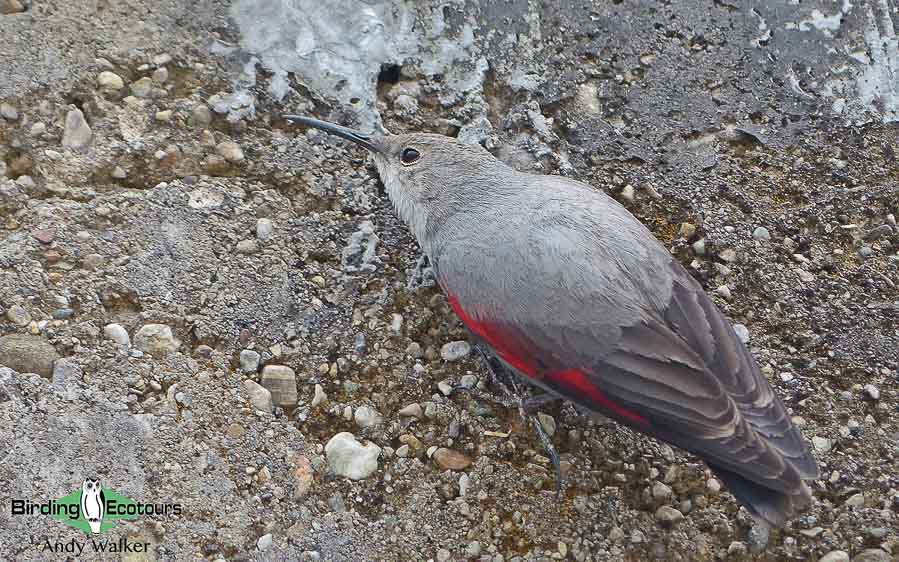
Our tour will start in Warsaw in central Poland before heading east towards the Belarus border. Here we will explore some of the most incredible marshland in Europe (Biebrza National Park), before delving into an ancient arboreal world (Białowieża Forest), steeped in a fascinating natural history and a tragic human one (the reminders of World War Two are never too far away in this part of the world and are poignant reminders of past atrocities). We will then move south, following the Ukraine border until we eventually reach the Slovakia border. We will end up in the remote southeast of Poland for what is sure to be a thrilling time in an area not visited by many birders at Low Beskids (Magurski National Park), offering the chance for exciting discoveries. Finally, we will head west along the Slovakia border where we will visit the high-elevation zone of the glorious Tatra Mountains (Tatrzański National Park), and some nearby wetlands, before ending the tour in historic Krakow.
The landscape of Poland is an interesting mosaic of different habitats; we can be birding in forest, reach a small marshland, then some agricultural land (arable, pastoral, or even fishponds), and then a river floodplain, all in a small area which all result in different species. Each area we will visit has been selected due to it holding certain key species that are not found anywhere else on our tour route, while some species will be found across multiple locations. Even the common birds in Poland will be exciting for visiting birders, such as Black Redstart, Eurasian Blue Tit, Hawfinch, Fieldfare, White Wagtail, European Goldfinch, and Common Rosefinch.
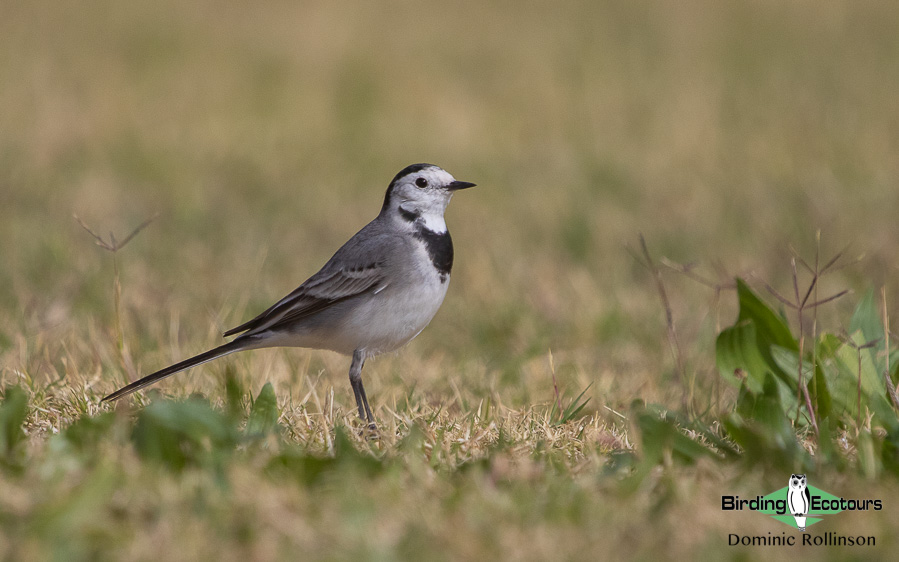
After arriving in the capital city of Warsaw we drive east and begin our tour in the world-famous Biebrza National Park. This extensive area of marshland around the Biebrza River is home to nearly 180 breeding species of birds in an average year and this diversity will give us some sensational experiences with the birds of the region. Some of the key highlights here include Great Snipe, Aquatic Warbler, Black Stork, Eurasian Hoopoe, Greater Spotted Eagle, Montagu’s Harrier, White winged Tern, and Whiskered Tern.
Spring in the area is an absolute festival of birdlife and every reedbed, bush, meadow, and riverbank is a wall of sound. While here we will target usually secretive warblers such as Common Grasshopper Warbler, Savi’s Warbler, and River Warbler, all giving their presence away by their distinctive songs. Biebrza is home to other stunning passerines too, including Citrine Wagtail, Ortolan Bunting, Bluethroat, Eurasian Penduline Tit, and Thrush Nightingale.
The Biebrza National Park is not just a vast expanse of marshes however, as it also includes some patches of ancient forest, especially to the south of the river. Here we will search for Black Woodpecker and White-backed Woodpecker, two of the many woodpecker species we can find on the tour.
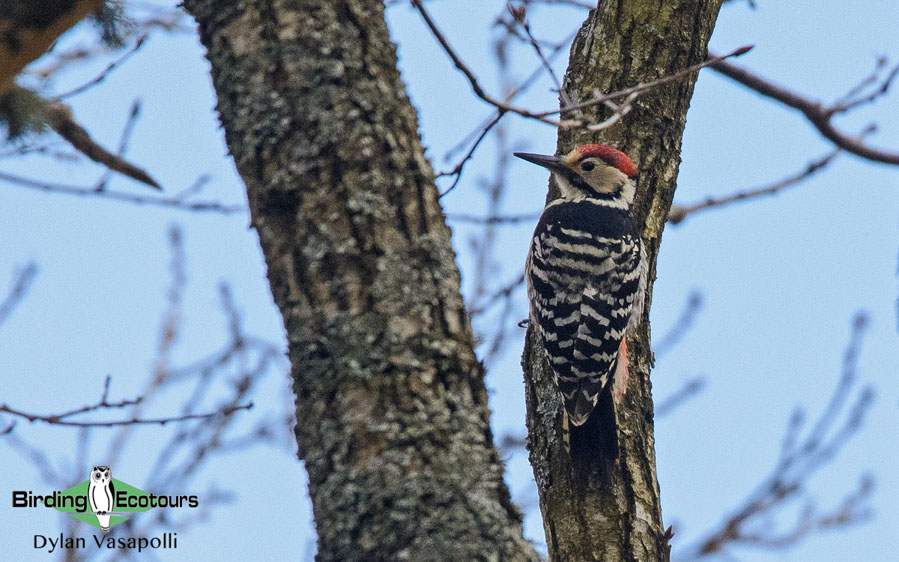
After exploring the open spaces of the marshes, we will move to the ancient Białowieża Forest National Park. This area is one of the last remaining areas of the primeval forest which once stretched across much of Europe.
While in Białowieża we will focus on targeting the rest of Poland’s many woodpeckers (other than Syrian Woodpecker, which is not reliably found here – but we have a spot for that later in the tour!) including Grey-headed Woodpecker and Eurasian Three-toed Woodpecker. Other key species of this beautiful forest include Red–breasted Flycatcher, Collared Flycatcher, Hazel Grouse, Spotted Nutcracker, Eurasian Pygmy Owl, European Nightjar, Eurasian Goshawk, Hawfinch, Barred Warbler, and Icterine Warbler.
During our stay here we will also have a short break from forest landscapes and visit Siemianówka Reservoir. This is an excellent spot for waterbirds including Garganey, Great (White) Egret, Black Tern, White-tailed Eagle, Citrine Wagtail, and Lesser Spotted Eagle.
From Białowieża we head south to the upland region of Roztocze on the border with Ukraine. This beautiful area is on the edge of the European steppe belt which runs through eastern central Europe and its avifauna reflects this habitat with plenty of new birds available for our tour here.
The real highlight of the area is the number of raptor species to be found. There are several scarcer species included in the main itinerary, but more common species here include Common Buzzard, Common Kestrel, Western Marsh Harrier, Lesser Spotted Eagle, Montagu’s Harrier, Eurasian Hobby, and Red-footed Falcon. It is also the only area in Poland where you can find Short-toed Snake Eagle and we will spend time looking for this spectacular snake-eater here.
We will explore the vast meadows and famed fishponds of this region in search of other species which are found nowhere else in Poland, including Ferruginous Duck, European Bee-eater, and Little Owl. In these habitats we also hope to come across other exciting species like Eurasian Dotterel, Black Stork, Red-backed Shrike, Great Grey Shrike, Syrian Woodpecker (this species colonized the rest of Poland from the Roztocze area which is its stronghold), Purple Heron, Red-necked Grebe, and Caspian Gull.
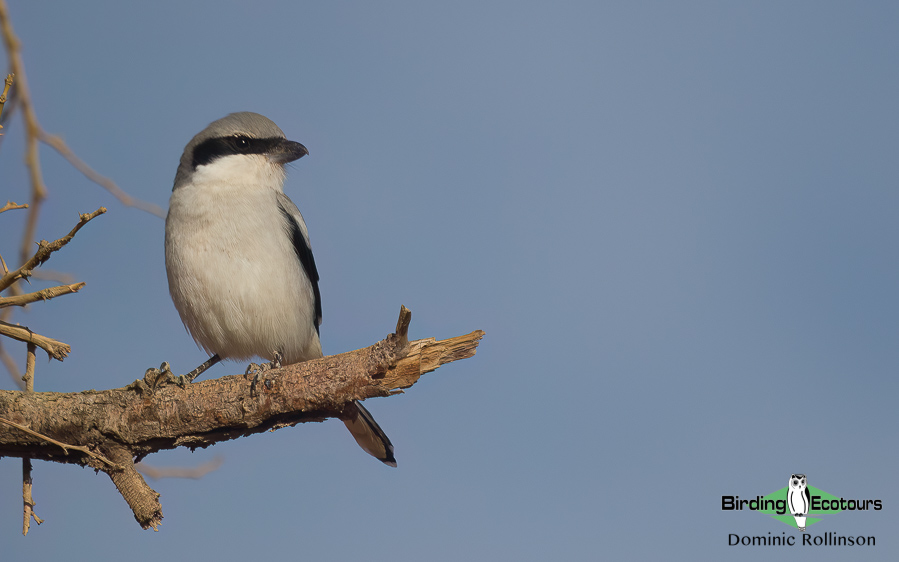
The penultimate destination of our comprehensive Poland tour is the Low Beskids, part of the Carpathian Mountains. This beautiful area in the southeast of the country is arguably the wildest part of Poland. Although the mountains in Magurski National Park are pretty low elevation (c3,300 feet/1,000 meters), they are a truly breathtaking place to visit. We will bird amongst the rolling hills and forests and take in Poland at its most untouched. Highlight birds of this stunning mountain area include Ural Owl, White-throated Dipper, Water Pipit, Ring Ouzel, Grey-headed Woodpecker, Black Stork, Golden Eagle, and European Honey Buzzard. While in the adjacent lowland forest areas we will look for Corn Crake, River Warbler, Wood Warbler, Icterine Warbler, Spotted Nutcracker, Hawfinch, and Eurasian Golden Oriole. These forests are also another great spot for Collared Flycatcher, multiple woodpecker species, and Hazel Grouse. Lesser Spotted Eagles occur here at their highest density in Europe, so we should see plenty of these.
The final stop on the tour will be to the stunning snow-capped peaks of the Tatrzański National Park (Tatra Mountains) along the Slovakia border. Here we will look for two very special birds in Wallcreeper (a highly sought-after monotypic family) and, after taking a cable-car ride to the top of a mountain, Alpine Accentor. We should also find Ring Ouzel and Water Pipit here.
Poland is also a great destination for European mammals and on this tour we could find many, including some really special ones like European Bison, Eurasian Lynx, Grey Wolf, (European) Wild Cat, (European) Brown Bear, Moose (Elk), Eurasian Beaver, Speckled Ground Squirrel, Northern Chamois, Alpine Marmot, Eurasian Red Squirrel, and the fascinating Raccoon Dog.
Itinerary (16 days/15 nights)
Day 1. Arrival in Warsaw, transfer to Biebrza Marshes
After your morning arrival at Warsaw Chopin Airport, (maybe after completing our Birding Tour Spain: Spring Birding Extravaganza tour) you will be met by your Birding Ecotours tour leader and expert Polish local bird guide. We will then transfer, in a comfortable minibus, to the town of Goniadz on the border of the Biebrza National Park. This journey will take around two and a half hours, as we drive east across Poland’s vast central region. If you would like to arrive before the tour starts, we can recommend and arrange hotels for you in Warsaw. The city has a famous history and is an interesting place to explore, particularly if you have an interest in World War Two.
We plan on leaving Warsaw by mid-morning and arrive in Goniadz early in the afternoon, checking into our accommodation for the next three nights. As this is the first day of the tour you may be tired after your long journey, so we will therefore have an optional afternoon birding session in the nearby marshes. Otherwise you can relax in the wonderful hotel garden which backs onto the marshes themselves, maybe starting your trip list off with Black Redstart, Common Cuckoo, or Eurasian Wryneck. We will have a traditional Polish evening meal at the hotel as a welcome for everyone where we will discuss the trip and get to know each other ahead of what is sure to be a fantastic two-week birding tour in Poland.
Overnight: Dwór Bartla, Goniadz
Days 2 – 3. Birding Biebrza Marshes
We will spend two full days (plus the morning of Day 4) birding the spectacular Biebrza Marshes. We will explore a wide range of habitats and sites here and take in the best birds this huge area has to offer. We will be packing a lot into our time here as there are just so many incredible birds to be found and lots of different habitats and sites to visit at one of the best wetlands in the whole of Europe. However, do not be fooled by the name of the area, yes there are lots of wetland habitats (complete with boardwalks and viewing towers), but there are also plenty of other habitats in the area, including some great forest, interesting farmland, and dry and sandy heathlands. Some of the specific areas we will visit here include the famous Goniadz, Długa Luka, and Brzostowo sites. Once we have visited these key areas, we will target specific sites for enjoyable avian experiences or specials which we may have missed previously.
The most important birds for us in this area of Poland are Aquatic Warbler and Great Snipe, both highly localized in Poland and Europe as a whole. Not too far from our centrally selected accommodation, is a Ruff lek, and here we stand our best chance of locating the Great Snipe. The Aquatic Warbler can be found in a vast marshland area from a boardwalk that we will visit.
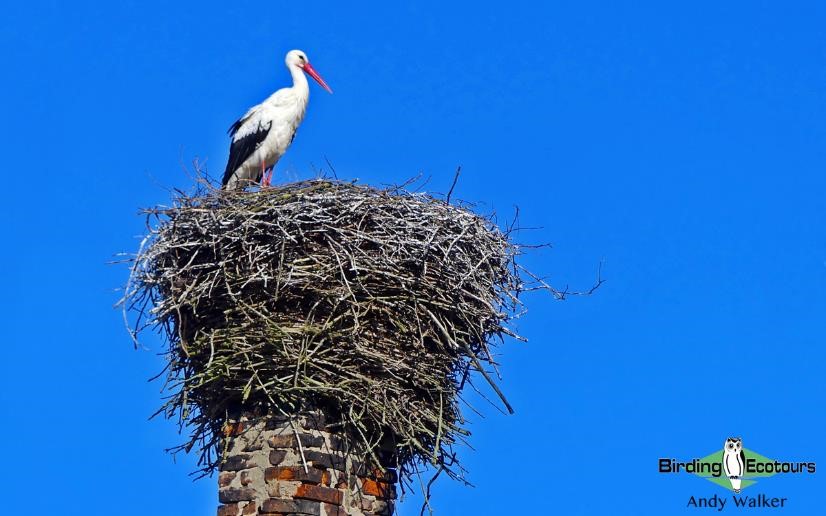
We will explore the area around the village of Goniadz itself. The village is the central point of Biebrza Marshes and the area is seriously rich with birds. While at the marshes there are several common species that we will see at multiple sites. These include Lesser Whitethroat, European Goldfinch, Black-headed Gull, White Stork (they are found nesting in many of the small villages and are an amazing sight), Eurasian Skylark, Barn Swallow, Common Chiffchaff, Eurasian Blackcap, Western Yellow Wagtail, Common Buzzard, and plenty more. The marshes are also home to two key mammals: Moose (Elk) and Eurasian Beaver. We could come across them pretty much anywhere within the national park.
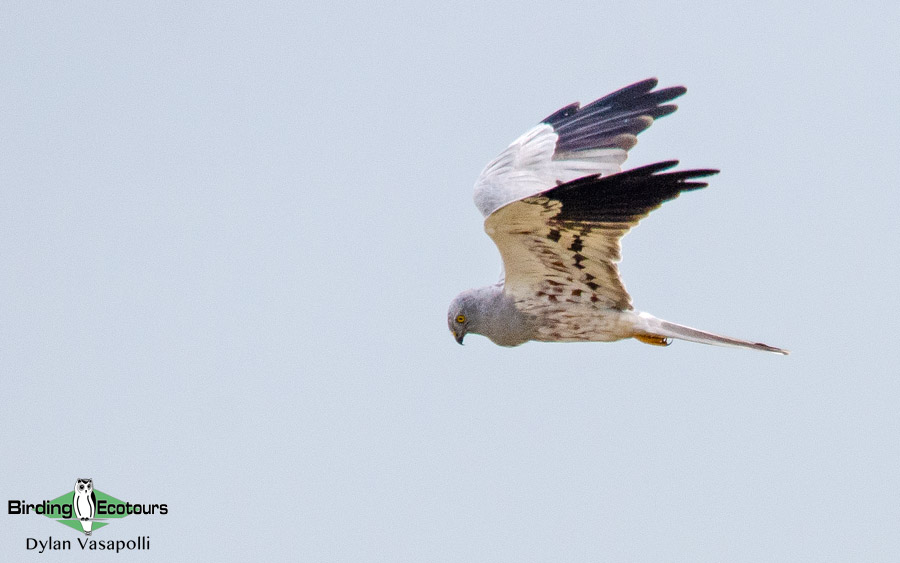
We will also get our first taste of the area’s key species and we could come across Eurasian Hoopoe, Eurasian Golden Oriole, Common Crane, White-winged Tern, Whiskered Tern, Great Spotted Eagle, Lesser Spotted Eagle, White-tailed Eagle, Temminck’s Stint, Savi’s Warbler, Bluethroat, Citrine Wagtail, and Eurasian Penduline Tit.
We will then move further afield within the Biebrza National Park, heading south from Goniadz, we will explore the area known as Długa Luka. This is a real highlight spot in the national park as it is regarded as the best place to see Aquatic Warbler. The simple boardwalk trail here should give us excellent views of this species but, like all warblers, they often require patience to get the best views. While here we will also look for a range of other species such as Little Bittern, Western Marsh Harrier, Montagu’s Harrier, Bluethroat, Thrush Nightingale, Barred Warbler, Common Grasshopper Warbler, Sedge Warbler, Savi’s Warbler, Great Grey Shrike, and Common Rosefinch.
Another excellent area that we will visit in the southern section on Biebrza Marshes is at Brzostowo. This is a fantastic site for breeding cranes, waterfowl, shorebirds (waders), and terns with common species including Black-necked Grebe, Black Stork, White-tailed Eagle, Common Crane, Ruff, Little Gull, White-winged Tern, Whiskered Tern, and Ortolan Bunting. There is also a chance of rarer species being found, including Red-necked Grebe, Lesser Spotted Eagle, Greater Spotted Eagle, Montagu’s Harrier, Eurasian Goshawk, Marsh Sandpiper, and Caspian Tern. This part of the wider site is definitely worth concentrating plenty of time on.
As mentioned above, this site is not all about the wetland habitats and we will also explore birch forests within the national park for Black Woodpecker, Grey-headed Woodpecker, White-backed Woodpecker, and Lesser Spotted Woodpecker. Here we may also find passerines such as Collared Flycatcher or Thrush Nightingale. While in the grassland areas between the forest patches we have a good chance of finding Black Grouse, Bluethroat, Citrine Wagtail, Whinchat, Northern Wheatear, Montagu’s Harrier, and Great Grey Shrike.
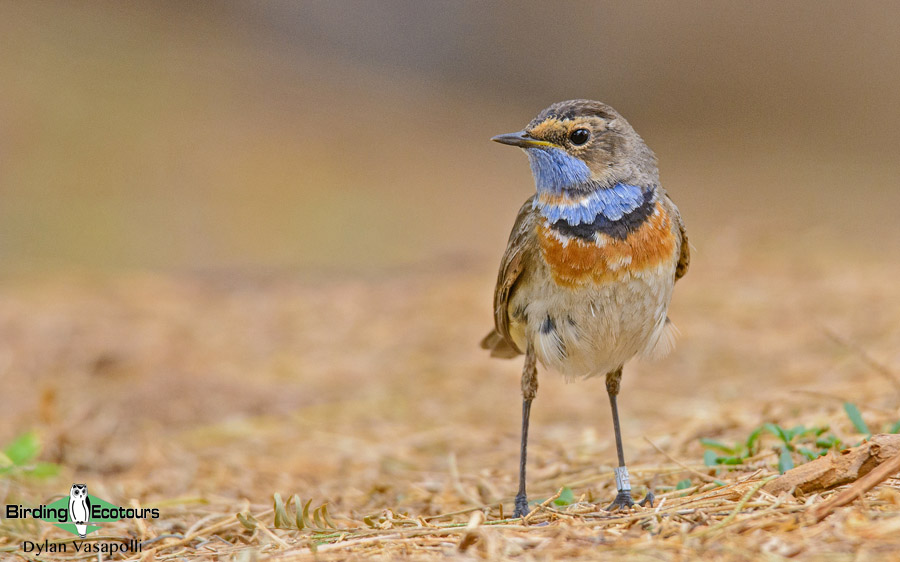
Each evening we will retreat to our hotel, where we will enjoy fine Polish food and discuss the day’s sightings, as we go through our daily bird and animal checklists, something we do every night on all our tours and is always fun as we reminisce on the day’s highlights.
Overnight (two nights): Dwór Bartla, Goniadz
Day 4. Biebrza Marshes to Białowieża via Dojlidy Fishponds
After birding the Biebrza Marshes for the final time we will head southeast and enjoy a quite different kind of birding. Just a two-hour drive from the mosaic of open marshes, scattered woodland, and rivers of Biebrza, is the ancient primeval Białowieża Forest. Here we will spend the next few days in search of some truly special birds.
On our way we will stop at the Dojlidy Fishponds on the outskirts of the city of Bialystok. This will be a good way to break up our journey and the site itself is home to some excellent birds including Eurasian Bittern, Caspian Gull, Red-necked Grebe, Black-necked Grebe, Little Crake, Eurasian Penduline Tit, Bearded Reedling (Bearded Tit), Savi’s Warbler, and Great Reed Warbler. The site is also excellent for a range of terns, gulls, waterfowl, and shorebirds (waders).
After finishing up at the fishponds we move on to Białowieża, a small village nestled in the heart of the ancient forest that stretches across the Belarus border. The wildlife and birds we seek can sometimes be found right up to our accommodation. This is another really birdy area and is one of the top forest sites in Europe.
Once settled into our accommodation, where we will be based for the next four nights, we will explore the picturesque Białowieża Palace Park, right in the heart of the village. This expansive parkland (complete with pretty ponds, wildflower meadows, and scattered tall trees) is a fantastic area for birds and common species here include Middle Spotted Woodpecker, Lesser Spotted Woodpecker, Grey-headed Woodpecker, Eurasian Wryneck, Great Reed Warbler, Marsh Warbler, Icterine Warbler, Greenish Warbler, Thrush Nightingale, European Robin, Dunnock, Common Redstart, Black Redstart, Collared Flycatcher, Eurasian Golden Oriole, European Serin, and Common Rosefinch. We should see gorgeous Eurasian Red Squirrels too.
Overnight: Dwór na Otulinie, Białowieża
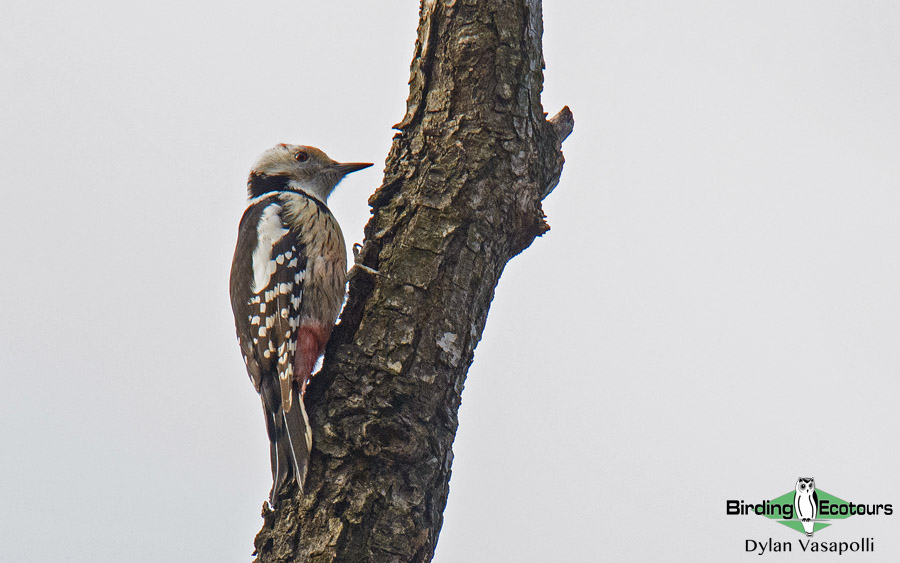
Days 5 – 7. Birding Białowieża Forest
We will have three full days to explore this top site, easily one of the best birding destinations in the whole of Europe. As at Biebrza, we will explore a few key sites while targeting specials of the area. One such site is the trail at Wysokie Bagno, to the south of Białowieża village. The superb trail will give us the chance of some special birds. We will be in ideal habitat to find the elusive Hazel Grouse and Eurasian Pygmy Owl while woodpeckers are also a key feature here, with Black Woodpecker, White-backed Woodpecker, Eurasian Three-toed Woodpecker, Middle Spotted Woodpecker, and Lesser Spotted Woodpecker all likely species. This is also an excellent location for new passerines such as Coal Tit, European Crested Tit, Willow Tit, Marsh Tit, Long-tailed Tit (the sublime white-headed caudatus subspecies), Common Firecrest, Wood Warbler, and European Pied Flycatcher.
Another key area during our visit will be the habitats around the village of Budy. This remote location is eastern Poland at its finest and its birds match the finery of the area. The meadows between Budy and the village of Teremiski will be scanned for perched Lesser Spotted Eagle while the scrub areas should contain Red-backed Shrike. This is also an excellent area for our first views of the huge European Bison, a staggeringly impressive (and rare), large mammal.
We will also explore the woodland around Budy Bridge. This area is famed for its woodpeckers and we have a good chance of six species here: Black Woodpecker, Grey-headed Woodpecker, Middle Spotted Woodpecker, White-backed Woodpecker, Eurasian Three-toed Woodpecker, and Lesser Spotted Woodpecker. The more open forests around Budy are also an excellent area to try and see Collared Flycatcher, Red-breasted Flycatcher, Hazel Grouse, Green Sandpiper, Common Snipe, Eurasian Golden Oriole, Icterine Warbler, Common Firecrest, Eurasian Hobby, Montagu’s Harrier, and Black Stork.
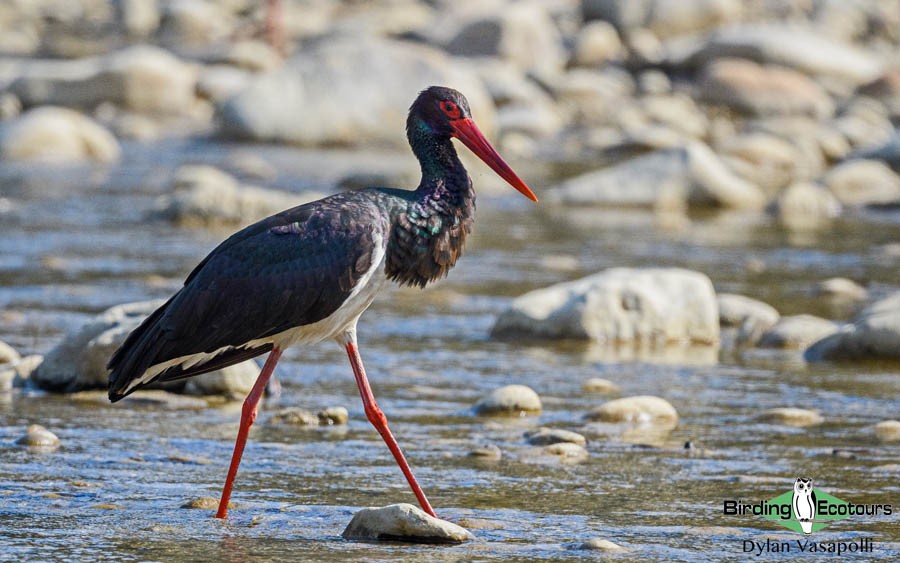
Small patches of reeds around wet areas should hold singing Common Grasshopper Warbler, River Warbler, Savi’s Warbler, Marsh Warbler, and Great Reed Warbler. Some of these species are extremely shy and inconspicuous while others are more obvious at this time of year. Those species that are setting up breeding territories, after returning from their sub-Saharan wintering grounds in Africa, can be easier to see and they all have some incredible vocalizations ranging from gorgeous melodic warbles to insect-like trills and scratches.
It is a special feeling being in Białowieża village, there are literally amazing birds everywhere, all of the time. The local farming style is like that of a bygone age, to anyone more familiar with current western intensive agricultural systems. Here, the small fields are surrounded by good quality, dense hedgerows and clumps of scrub and scattered trees, these all result in lots of insects, which in turn provides lots of food for lots of birds and plenty of enjoyment for us! White Storks patrol the fields and are quite obvious, but lurking in the same area can be a myriad of other species and you just never know what you might bump into. This is especially true during the spring migration period (our tour takes place in spring) when many birds pass through the region as they head to the Arctic taiga and tundra zone. It is an exciting time to be birding in this part of Europe when a Eurasian Wryneck might appear right in front of you, or a Marsh Warbler might mimic the call of a European Bee-eater (which could also be overhead) from a nearby bush!
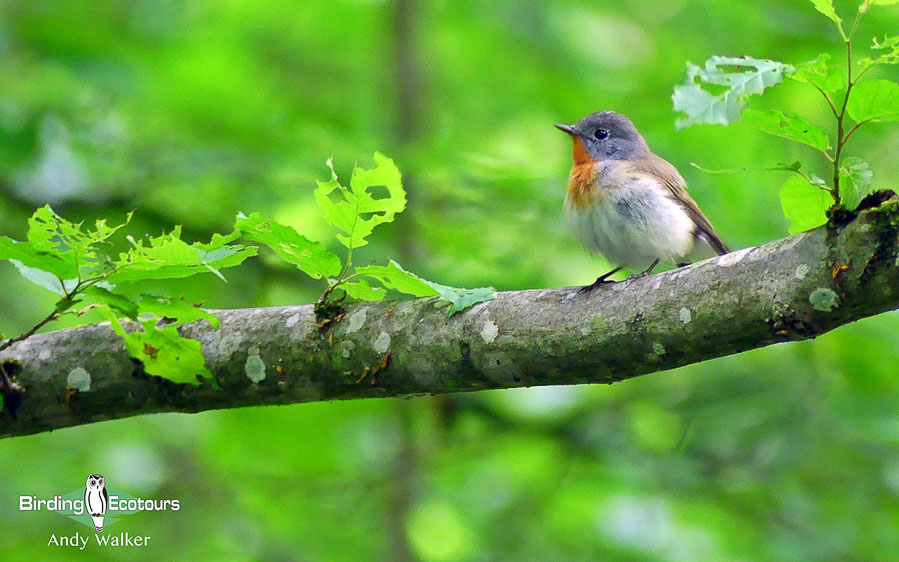
One of the real treats while birding in Białowieża is a visit to the Strict Reserve. Entering through the Palace Park, we will walk into a whole other world, the ancient, primeval, and, pretty much, untouched forest that once stretched across most of Europe after the last ice age. Białowieża Forest started growing around 11,000 years ago and this section of the forest has been a primeval wilderness for millennia, even escaping the destruction that occurred to 25% of the wider forest area during World War Two. Entrance to this reserve is only allowed with a local guide and specific routes are to be followed. It is a unique experience and one to savor. Many of the birds we see in the Strict Reserve will be similar to those seen outside but could include Eurasian Three-toed Woodpecker, Black Woodpecker, White-backed Woodpecker, Eurasian Nuthatch, Eurasian Treecreeper, Common Wood Pigeon, Eurasian Jay, Spotted Flycatcher, Collared Flycatcher, Red-breasted Flycatcher, Eurasian Golden Oriole, Fieldfare, Redwing, Tree Pipit, and Hawfinch. Our time inside the Strict Reserve is sure to be memorable.
While in Białowieża we will also take a drive to the vast Siemianówka Reservoir. This area straddles the border with Belarus and will offer a new experience to the birding we have done so far. The habitats here (other than the huge waterbody) are a mixture of reedbeds, forest patches, and farmland. The reservoir itself is an excellent spot for birds and over 240 species have been recorded here, the vast majority of those in spring.
Key species that we will focus on here (those that could be harder to find elsewhere on the tour) include Whooper Swan, Common Goldeneye, Eurasian Bittern, Black-winged Stilt, Spotted Redshank, Greater Spotted Eagle, European Honey Buzzard, Lesser Spotted Eagle, Hen Harrier, Red-footed Falcon, Water Rail, European Green Woodpecker, Red-throated Pipit, and Short-eared Owl, but there will be many other species found here during our visit too.
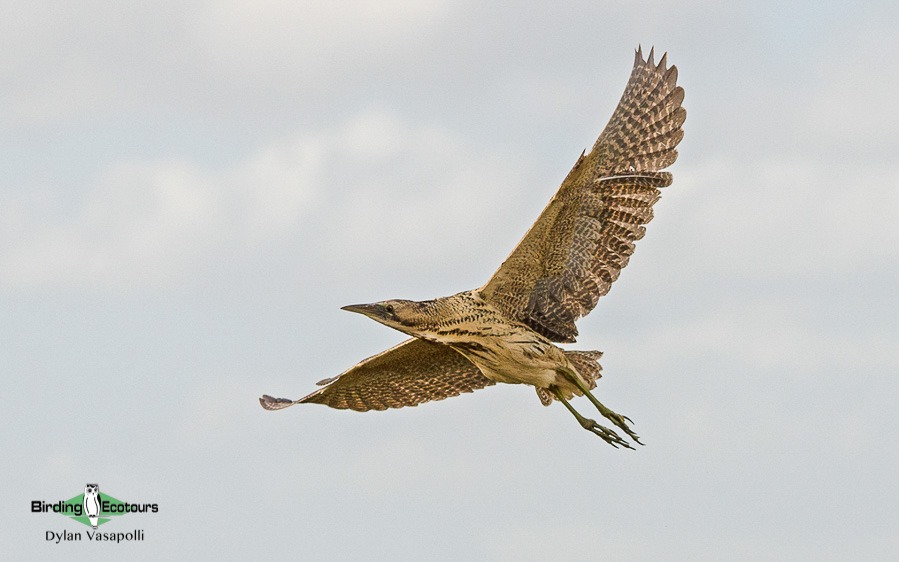
After our action-packed days exploring the Białowieża Forest and surrounding area we will head back to our comfortable guesthouse in Białowieża village each evening where we can enjoy traditional Polish food and hospitality.
Overnight (three nights): Dwór na Otulinie, Białowieża
Day 8. Białowieża to Roztocze
After several days exploring the primeval forest at Białowieża we, once again move on, after our final birding session in this awe-inspiring area, and head south for two nights in the beautiful Roztocze region of southern Poland. The journey of around five hours will see us travel down much of Poland’s eastern border with Ukraine before finally arriving in the city of Roztocze. We will make a start on the birding in the late afternoon, time permitting.
Overnight: Hotel in Janów Forest Landscape Park
Day 9. Birding Roztocze region
Roztocze is the only place in Poland where we can find several species from southern Europe and these will be the main targets for the next two days. We will search the area’s numerous fishponds for the shy Ferruginous Duck. This species is Near Threatened (BirdLife International) and the ponds in Roztocze are the only area in Poland to reliably see this species.
We will also explore the meadows and crop fields on the edge of the Janów Forest. Here we will look for the incredibly rare and absolutely stunning Short-toed Snake Eagle. There is believed to be only five pairs in the whole of Poland, making this a highly prized target of our tour.
This area is also home to two relatively new arrivals in Poland. The open fields are a great place to look for the beautiful European Bee-eater and the woodlands here are home to Syrian Woodpecker. Both these species only colonized Poland in the 1970s and the mild climate in this corner of the country makes it a reliable place to see them both and will provide a thrilling birding experience. There are not many sounds more evocative than the sound of the bee-eater!
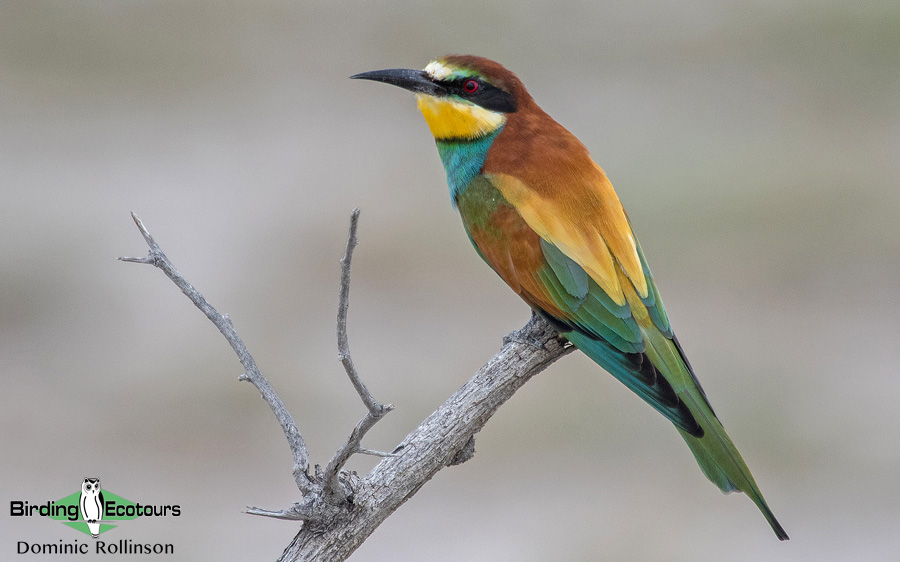
Alongside our main targets, we should come across a great range of other species including Little Bittern, Black Redstart, Common Redstart, European Serin, Eurasian Golden Oriole, Little Owl, Icterine Warbler, Ortolan Bunting, Red-backed Shrike, and European Turtle Dove.
While in the area we will also visit Zamość. The area around this historic city is home to Speckled Ground Squirrel, a Near Threatened (IUCN Red List) mammal which only breeds in the Roztocze region of Poland.
Overnight: Hotel in Janów Forest Landscape Park
Day 10. Roztocze to Low Beskids
After a final morning birding around the Roztocze area we will make our way into the remote southeast of Poland, not too far from the Slovakian border and Magurski National Park. We will arrive at our base for the next two nights and commence with some birding in this new and exciting area, perhaps making a start on some of the highlights listed for Day 11.
Overnight: Hajstra, Low Beskids
Day 11. Birding Magurski National Park, Carpathian Mountains
Our next area of focus is the beautiful foothills of the Magurski National Park, part of the spectacular Carpathian Mountains. Here we will spend the full day (as well as the previous evening and following morning) searching for birds inhabiting the different elevations of these mountains.
The forests here will be alive with birds at this time of year and we should come across Spotted Nutcracker, Tawny Owl, Red-breasted Flycatcher, Collared Flycatcher, European Pied Flycatcher, Wood Warbler, Ring Ouzel, Red (Common) Crossbill, Eurasian Nuthatch, Eurasian Jay, Eurasian Treecreeper, Black Redstart, Goldcrest, Willow Warbler, Common Firecrest, European Serin, and Willow Tit.
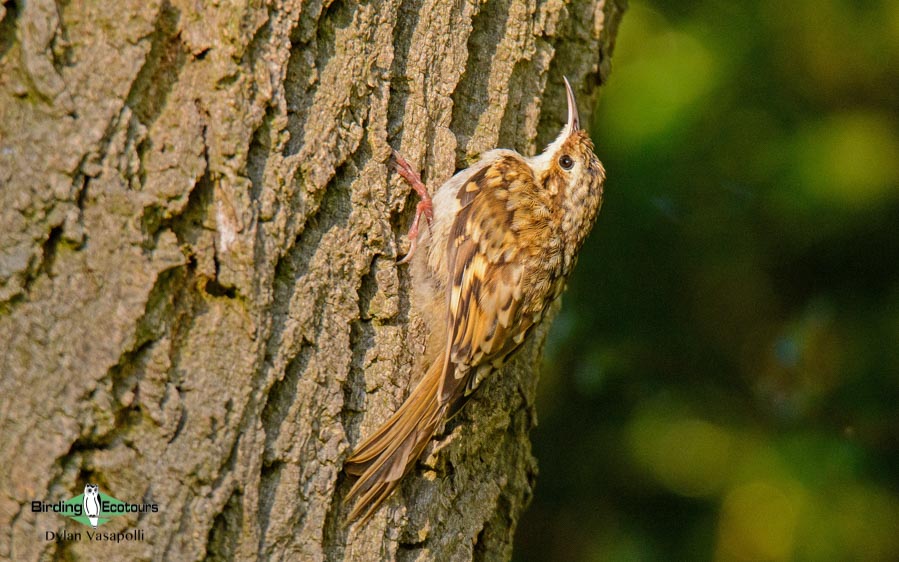
This is another excellent area for woodpeckers and once more we will search for White-backed Woodpecker, Great Spotted Woodpecker, Lesser Spotted Woodpecker, Grey-headed Woodpecker, and Black Woodpecker. More open areas will give us a good number of birds of prey including European Honey Buzzard, Golden Eagle, Common Buzzard, and Common Kestrel. Lesser Spotted Eagles occur at their highest density in Europe here and so we stand a very good chance of further views of this large raptor.
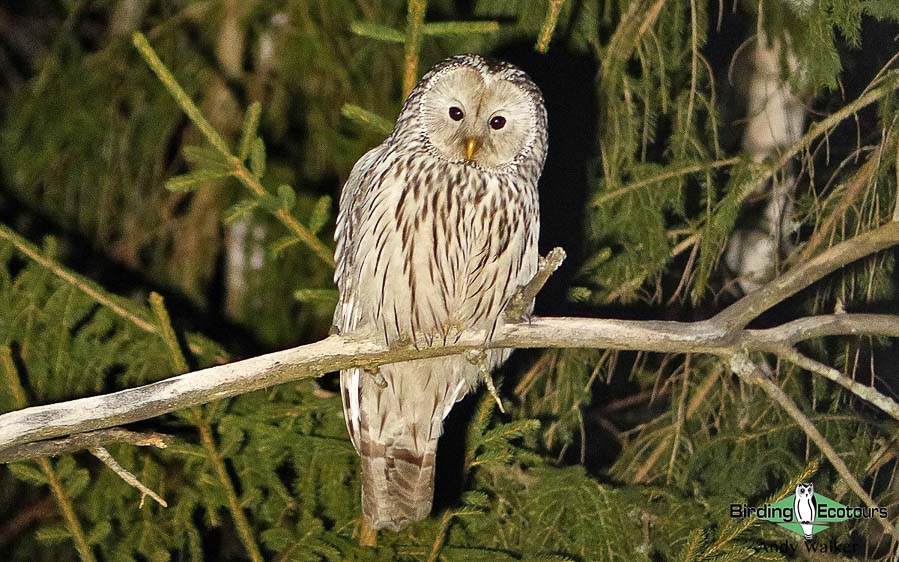
One of the avian highlights, and challenges, of our time in Magurski will be searching for the large Ural Owl. To find this species, we will undertake evening drives but also search for nest sites during the day. Ural Owl can be incredibly challenging to find but a sighting is worth the effort. The night trips will be a great chance for finding mammals, maybe the odd-looking Raccoon Dog!
Overnight: Hajstra, Low Beskids
Day 12. Low Beskids to Zakopane (Tatra Mountains)
We will have a final morning birding in the Magurski National Park area, perhaps looking for more of the birds mentioned for Day 11, before we commence the relatively short drive to our base for the next three nights, near the town of Zakopane in the spectacular Tatra Mountains. The Tatra Mountains are the highest mountain range in Poland (and in the whole of the Carpathian Mountains), and we will be in for some fun days thoroughly exploring this area across a wide range of elevations. We will make a start on those birds mentioned for Days 13 – 14.
Overnight: Dworek na Klinie, Zakopane
Days 13 – 14. Birding Tatra Mountains
We will enjoy two full days (as well as the previous afternoon and morning of Day 15) birding through a range of elevations within the Tatrzanski National Park and the wider area. One of our main target birds in the national park is the highly prized Wallcreeper, a unique species belonging to a monotypic family. They should have just returned to their breeding sites, after the winter period, by the time of our tour and we will allocate plenty of time to try to find them.
The mountain streams of the national park are an excellent area to find Grey Wagtail, White-throated Dipper, Common Kingfisher, Common Merganser (Goosander), and White Wagtail.
While looking for Wallcreeper we might also find Golden Eagle and Spotted Nutcracker, along with a long list of more common and widespread birds like Eurasian Three-toed Woodpecker, Red (Common) Crossbill, Common Firecrest, Spotted Flycatcher, and Red-breasted Flycatcher.
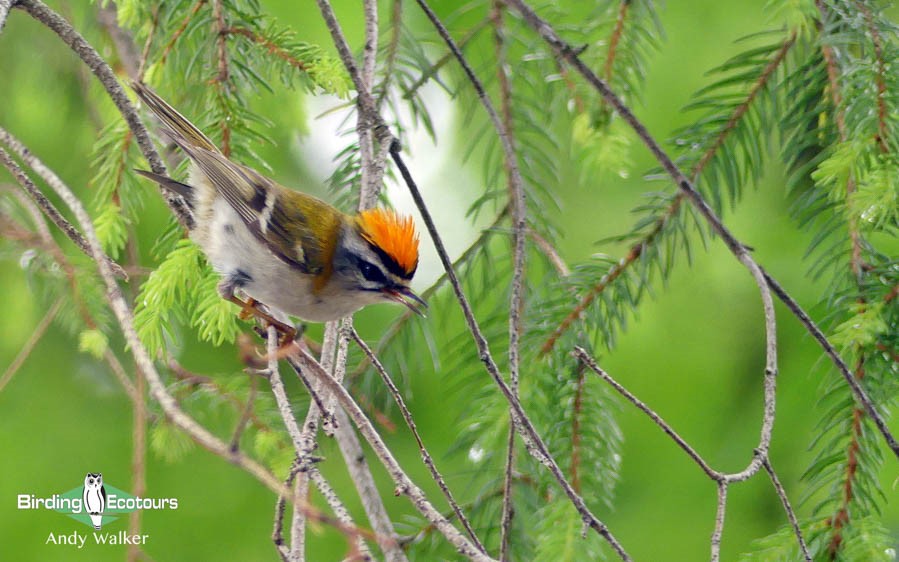
One of the mornings will see us getting up to the high peaks of the Tatra Mountains. Do not worry though, limited hiking is needed as we will take a very sturdy cable-car ride all the way to the top of the mountain (it is like being in a floating coach!). On reaching the top, we will hope for clear views of the stunning snow-capped peaks. It really is a spectacular place! We will immediately start looking for our main target, the extremely habitat-specific Alpine Accentor.
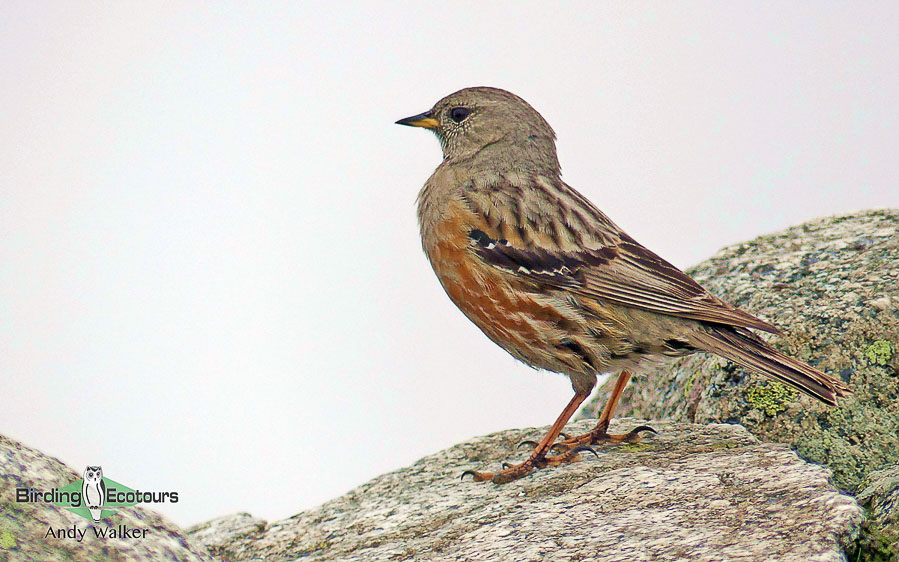
Other birds we will look for in this zone include Ring Ouzel, Water Pipit, Northern Wheatear, Mistle Thrush, Lesser Redpoll, and whatever else we can find. We will also look for the Critically Endangered (IUCN) tatrica subspecies of Northern Chamois (a goat-like mammal); there are estimated to be less than 200 individuals of this subspecies in the world and it is still declining. Another top mammal here is Alpine Marmot; the latirostris subspecies of this mammal that occurs in the High Tatras is rare, threatened, and has a restricted range.
Numerous exciting birds will be possible during this part of the tour, but we will also keep a look out for Europe’s “Big Five” mammals while out birding in this remote part of Poland: European Bison, Eurasian Lynx, (European) Grey Wolf, (European) Brown Bear, and (European) Wild Cat. All five of these species can be incredibly elusive and all occur in small numbers in the national park, so sightings of them, like many things in nature, are not guaranteed. That said the national park is probably the best place in Poland to see all five of these animals. While exploring the area, we will also look for amphibians and reptiles. Distinctive species, that only occur in this area of Poland, like Fire Salamander and Aesculapian Ratsnake will hopefully be the standout species and are likely to add to what will be an enjoyable few days here.
Overnight (two nights): Dworek na Klinie, Zakopane
Day 15. Zakopane (Tatra Mountains) to Zator
After a final morning birding around the Tatra Mountains near our base we will head towards the town of Zator for the final night and birding of the tour. Along the way we will call in to Orawa Reservoir, along with its neighboring peat bogs and meadows. Here we will hopefully get another look for Western Marsh Harrier, Garganey, Marsh Warbler, and if we are extremely lucky, the secretive Black Grouse. One of our other major targets here is the bewitching Corn Crake. This species is quite a late migrant to Poland, and we may find that we do not record this species until we get to southern Poland. Here we will put plenty of time into searching for it and listening out for its distinctive “crex crex” call which gives the species its scientific name. Of course, if we have heard the species before now, we will have tried to see it, they are incredibly shy and tough to see usually, though singing males may show occasionally.
During our final evening meal together the tour leader and local guide will be on hand to answer questions relating to the trip or identification of species we have seen. We will also need to make the vital choice of ‘bird of the trip’, which will not be easy as we will have seen so many fantastic species (and we do have one final exciting birding location to visit on our final morning – will there be any late contenders?).
Overnight: Karpik, Zator
Day 16. Transfer to Krakow airport where tour concludes
Our last birding of the tour will see us visit the amazing “Zator Fishponds” near Krakow. There are an incredible number of artificial and natural wetlands here (such as Spytkowice Fishponds) and we will finish the trip with many fantastic birds, such as breeding Black-necked Grebe, Whiskered Tern, Caspian Tern, Eurasian Bittern, Black-crowned Night Heron, Little Egret, Red-crested Pochard, Common Pochard, Egyptian Goose, Northern Lapwing, and Little Bittern. Interesting passerines here may include Bluethroat, Common Nightingale, Corn Bunting, Yellowhammer, and River Warbler.
In the late morning we will check out of our accommodation and start our short journey to John Paul II Krakow-Balice International Airport where this Poland: Best of Eastern Europe tour will end at 2pm.
You can connect with your flight home in the late afternoon/early evening, or continue your travel further, such as exploration of the Krakow area (some people who have birded in this part of Poland with us have been interested to visit the Auschwitz-Birkenau Memorial and Museum, for example) or you might be interested in extending your birding in Europe with our United Kingdom Birding Tour: England and Scotland in Spring tour.
Overnight: Not included
Please note that the itinerary cannot be guaranteed as it is only a rough guide and can be changed (usually slightly) due to factors such as availability of accommodation, updated information on the state of accommodation, roads, or birding sites, the discretion of the guides and other factors. In addition, we sometimes must use a different international guide from the one advertised due to tour scheduling.
Download ItineraryPoland Trip Report
28 MAY – 04 JUNE 2018
By Andy Walker
DOWNLOAD TRIP REPORT
This trip report is an example of a Poland custom birding tour that visited some of the areas we visit during our Best of Eastern Europe Poland tour.
This one-week customized Poland tour commenced in Krakow on the 28th of May 2018 and concluded back there on the 4th of June 2018. The tour visited the bird-rich fishpond area around Zator to the southwest of Krakow before venturing south to the mountains along the Poland and Slovakia border.
The tour connected with many exciting birds and yielded a long list of European birding highlights, such as Black-necked and Great Crested Grebes, Red-crested Pochard, Garganey, Black and White Storks, Eurasian and Little Bitterns, Black-crowned Night Heron, Golden Eagle, Western Marsh and Montagu’s Harriers, European Honey Buzzard, Red Kite, Corn Crake, Water Rail, Caspian Gull, Little, Black, and Whiskered Terns, European Turtle Dove, Common Cuckoo, Lesser Spotted, Middle Spotted, Great Spotted, Black, European Green, and Syrian Woodpeckers, Eurasian Hobby, Peregrine Falcon, Red-backed and Great Grey Shrikes, Eurasian Golden Oriole, Eurasian Jay, Alpine Accentor, Water Pipit, Common Firecrest, European Crested Tit, Eurasian Penduline Tit, Savi’s, Marsh, Icterine, and River Warblers, Bearded Reedling, White-throated Dipper, Ring Ouzel, Fieldfare, Collared Flycatcher, Black and Common Redstarts, Whinchat, Western Yellow (Blue-headed) Wagtail, Hawfinch, Common Rosefinch, Red Crossbill, European Serin, and Ortolan Bunting.
A total of 136 bird species were seen (plus 8 species heard only), along with an impressive list of other animals, including Common Fire Salamander, Adder, Northern Chamois, Eurasian Beaver, and Brown Bear. Species lists are at the end of this report.
Poland Custom Tour:
Day 1, 28th May 2018. Arrival into Krakow and travel to Zator
After an evening arrival into Krakow we met up with our excellent local guide Kasia and traveled for approximately one hour southwest to the town of Zator where we checked into our spacious country B&B for the first of a couple of nights stay in the area.
Day 2, 29th May 2018. Zator fishponds
Within the first five minutes of stepping out of the B&Bs front door we had seen nesting White Stork, male Montagu’s Harrier, a pair of European Serin, heard European Green and Great Spotted Woodpeckers, seen Eurasian Golden Oriole, and best of all the rapidly-declining European Turtle Dove, and we’d barely set foot out of the garden!
We visited a couple of fishponds for an hour before breakfast and found nesting Black-necked Grebes, Great Crested Grebes, and Whiskered Terns, along with Common Pochard, Tufted Duck, Gadwall, and Mute Swan, with Black-crowned Night Heron and Grey Heron flying through. Water Rail called once from a patch of reeds, but we were unable to get views of this secretive species. The calls of Great Reed Warbler and Sedge Warbler rang out across the pools, as did that of Common Cuckoo.
After breakfast we visited a different set of fishponds and were treated to some very memorable sightings, not least the ‘flock’ of three Eurasian Bitterns that were flying around chasing each other for quite some time (with several others ‘booming’ from the reedbeds at the same time). A low-flying Black Stork provided some very welcome views of this often-secretive species, as did a couple of European Honey Buzzards, Western Marsh Harrier, Bearded Reedling, Eurasian Nuthatch, Common Rosefinch, Eurasian Golden Oriole, Black-crowned Night Heron, Garganey, and Caspian Gull, as well as many more nesting Whiskered Terns and Black-necked Grebes.
In the late afternoon, after a bit of a thunderstorm, we headed back out to some ponds near our B&B. Here we heard Eurasian Penduline Tit, but it remained out of sight. Other more obliging birds (but not by much in some cases) included Great Reed, Savi’s, Marsh, Sedge, and Eurasian Reed Warblers. Further prolonged views of mixed-species nesting colonies of Great Crested and Black-necked Grebes and Whiskered Terns were had. A Common Cuckoo flew through and a White Stork flew towards its nearby nest. Another Water Rail called, but this one was even deeper in the reedbed.
After our evening meal we again took a short walk, where we found several new birds for the day, including European Greenfinch, Common Merganser (Goosander), Great Egret, Common Redshank, Common Tern, and best of all a very obliging River Warbler allowing prolonged views as it sang to us at eye-level. Another thunderstorm rolled in, so we made a hasty retreat back to our B&B and called it a day before the rain came down., ending a very enjoyable first day’s birding on the tour.
Day 3, 30th May 2018. Zator fishponds and travel to Niedzica
We again spent the morning birding around a series of fishponds near our B&B and, despite covering a similar area to the previous day, were rewarded with many new species, and improved looks at several of those already seen. Some of the highlights of our pre-breakfast walk included a glimpse of Water Rail, Eurasian Hobby, Spotted Flycatcher, Marsh Warbler, Whinchat, European Stonechat, Mistle Thrush, Eurasian Golden Oriole, Lesser Spotted and Great Spotted Woodpeckers, Hawfinch, and nesting Black-necked Grebes and Whiskered Terns.
The midmorning was spent covering other fishponds, where we saw Little Bittern, excellent prolonged views of a singing Marsh Warbler, a nesting Eurasian Penduline Tit, Common Rosefinch, Red-crested Pochard, Garganey, Black Stork, Northern Lapwing, Little Ringed Plover, Green and Wood Sandpipers, Black Tern, and Caspian Gull.
The majority of the afternoon was spent traveling to Niedzica in the mountains, very close to the Slovakian border. An increase in Fieldfare was evident, as were our first Common Kestrels and several nesting White Storks. After finding some dinner in town we had an early night, ready for the following morning’s early start.
Day 4, 31st May 2018. Tatra National Park
An early start saw us hitting the road for the Tatra Mountains (getting some excellent views of the still snow-capped slopes along the way). A couple of roadside stops gave us Great Grey Shrike, White-throated Dipper, Fieldfare, Common Blackbird, Song Thrush, White Wagtail, Spotted Flycatcher, and Red Fox.
We set off on a four-kilometer walk through a mountain valley and were soon watching an interesting range of birds. White-throated Dippers were showing incredibly well along several stretches of river, and Grey Wagtails were also numerous here. Both Black Redstart and Common Redstart were around the national park ticket office, along with European Robin, Dunnock, and Eurasian Wren. Several Northern Ravens were about, giving interesting vocalizations as we walked past them, and both Eurasian Jay and Spotted Nutcracker were seen flying through, but better views were desired for the latter. Common Buzzard and Common Kestrel got the pulses going for a few moments as we were scanning the ridges. However, eventually one of our big targets did come into view, a stunning Golden Eagle. Both Goldcrest and Common Firecrest were heard but unfortunately not visible, although Coal Tit and European Serin did both show nicely.
Many beautiful butterflies were evident throughout the morning. But the real highlight of the day came in the form of a serious surprise… While scanning the mountain ridges we were alerted to the presence of a large shape on the small grass-slope clearing in front of us ̶ it was only a Brown Bear! The bear soon walked out of our sight, but we were ecstatic with our brief view as it disappeared into the bush, thinking we had been very lucky with what we had seen. About 20 minutes later another, smaller bear appeared into view and gradually started walking towards us as it fed, seemingly totally oblivious to our presence! Unbelievably the bear continued closer and closer, stopping at the river (which was separating us from it). It then crouched down and started drinking from the river – a mere 15ft from us! We were all speechless with excitement at what we were witnessing. After a few moments (that felt like an age) the young bear seemed to notice us (and the growing group of onlookers) and gradually started back up the slope, occasionally shooting us a quick glance as it walked away and into the undergrowth, where it disappeared. What an incredible sighting!
It was going to be hard to beat that, so we started our hike back for a late lunch/celebratory cake! During the afternoon we headed back to our B&B and spent the late afternoon resting and daydreaming about Brown Bears!
Day 5, 1st June 2018. Pieniny National Park
We had a later breakfast than on the previous day and then headed to the nearby Pieniny National Park, where we walked a mountain trail in the ‘three-crowns’ area. We enjoyed a showy European Serin, Black Redstart, Common Chiffchaff, and European Goldfinch and followed these up along the trail with European Crested Tit, Tree Pipit, Fieldfare, Song Thrush, Lesser Whitethroat, Common Whitethroat, Eurasian Blackcap, and Spotted Nutcracker. As we looked at the skies we observed Golden Eagle, European Honey Buzzard, and a pair of Peregrine Falcons flying around the peak. We also identified at least 15 species of butterflies, the most spectacular (and, thankfully, most showy) was the huge Poplar Admiral.
After a break during the heat of the middle of the day we again ventured out, visiting a patch of scrub and lakeshore. Here we found several warblers, including Marsh, Garden, and Willow Warblers, Eurasian Blackcap, Common and Lesser Whitethroats, and Common Chiffchaff. Fieldfares were breeding everywhere and constantly bringing food to hungry nestlings. Common Rosefinches were quite vocal with their “pleased-to-meet-you” song, at least four ‘brown’ birds singing, but finally we found a nice ‘colored’ male that showed off for us. A view of the lake yielded over 30 Great Crested Grebes, a family of Common Mergansers, Little Ringed Plover, and a mixed flock of Common and Black Terns. Another non-avian treat came in the form of a small Adder that was moving along the sandy access track.
Day 6, 2nd June 2018. Pieniny National Park
A pre-breakfast amble for Maria gave her excellent views of Eurasian Beaver, but it had disappeared by the time everyone else got down to the lake! The others of us had to settle for three Little Ringed Plovers, several Caspian Gulls, and a mix of various hirundines.
We spent the morning hiking along a ridgeline near our accommodation, which was really nice and peaceful, and birdy too. Lesser Whitethroat was singing next to our parking spot, and soon after came the distinctive call of European Green Woodpecker, followed by a couple of brief views of the male bird (a difficult woodpecker to catch up with in Poland). Black Redstarts and Spotted Flycatchers were noted, as well as several European Robins, Eurasian Blackcaps, and Common Whitethroats. A couple of European Serins showed beautifully, as did Yellowhammer. A single European Roe Deer walked across the meadow, and a couple of Eurasian Red Squirrels were found. A couple of male Icterine Warblers were singing at each other across the meadow, but neither was visible. As we entered a patch of forest we picked up Spotted Nutcracker, Common Cuckoo, Red-backed Shrike, Tree Pipit, Eurasian Nuthatch, and Great Spotted Woodpecker. A screaming call alerted us to the presence of a Peregrine Falcon, so after some quick scanning the bird was located atop a dead tree, complete with a recent kill. The sound (and sight) of displaying Common Buzzards was also very obvious here, and careful scanning located a single European Honey Buzzard too, and a bit later, ahead of an oncoming thunderstorm, a Red Kite. However, star bird sighting of the morning was the male Black Woodpecker that flew in and landed very close to us, giving excellent views. This is a seriously impressive bird. As we left the birding site for lunch we picked up a smart male Whinchat in one of the beautiful meadows. It was also in the meadows, and the forest edges that we found yet more beautiful butterflies of many species, such as Large Copper, Heath Fritillary, Woodland Ringlet, Meadow Brown, and Black Hairstreak.
Much of the afternoon was, unfortunately rained out with a torrential thunderstorm, but once it cleared we had a really enjoyable couple of hours, during which we found some great birds and other wildlife. Avian highlight came right at the end of the day, when we got fantastic views of a Corn Crake; prior to this we had enjoyed watching a pair of Hawfinch feed the young in their nest, several Willow Tits, Red-backed Shrikes, and Yellowhammers, as well as Goldcrest and another Whinchat. Non-avian highlight of the day was undoubtedly the Common Fire Salamander that sat in the middle of the track, presumably coaxed out by the wet conditions underfoot. What a stunning creature!
Day 7, 3rd June 2018. Tatra National Park
The morning saw us heading out in light rain to the Tatra National Park once more, where we jumped aboard a series of cable cars to take us up to the high-elevation areas. After about 30 minutes of riding we arrived near the top of our chosen mountain and were greeted with a wall of clouds all around us. Birds were definitely present as we could hear our three main target birds immediately, but seeing them just as quickly would prove a little more difficult. With some patience, waiting for the breaks in the clouds, first we got good views of two pairs of Water Pipit, then followed it up with a very confiding Alpine Accentor (see front cover image), and finally alpestris Ring Ouzel. Here we also found more widespread species, such as Mistle Thrush, Fieldfare, Northern Wheatear, White Wagtail, and Black Redstart. A new mammal was also found while up here when we came across the Critically Endangered (IUCN) tatrica subspecies of Northern Chamois (a goat-like mammal); there are estimated to be less than 200 individuals of this subspecies in the world. It showed really well as it lay in the grass cleaning itself. Back at lower levels Common Rosefinch was vocal, and best of all was a very showy Common Firecrest. A gorgeous little bird!
After returning to our B&B (via a riverside stop and a Common Kingfisher sighting) in the late afternoon we had an early dinner and headed out for an evening birding session. The Corn Crake was still calling from its meadow, and Red-backed Shrike and Whinchat were both also present. Walking into the forest we noticed a very dapper Red Fox and soon followed it up with two caudatus Long-tailed Tits and the nesting Hawfinch. As we reached a clearing the sound of woodpeckers alarming and drumming got our attention – at least four Great Spotted Woodpeckers were present and very agitated. Possibly they were agitated by the presence of a nearby Eurasian Pygmy Owl or Long-eared Owl (both were heard calling). Eurasian Woodcocks were busily roding over the forest clearings, and a European Roe Deer was making some very scary sounds from the undergrowth when it got dark! As we eventually returned to our vehicle the distant sound of a Tawny Owl could be heard in the distance.
Day 8, 4th June 2018. Krakow and tour conclusion
Early risers were again rewarded with Eurasian Beaver sightings, with at least five seen around their lodge. After packing up we started our final day’s birding as we made our way back to Krakow in time for Mark and Maria’s evening flights home.
Our first stop of the morning was at a reservoir south of Krakow with some exposed mud at one end. Here we found a small group of territorial Little Ringed Plovers and a couple of pairs of Northern Lapwings. Several Common Terns were fishing in the reservoir and loafing on the mud and were joined by both a single Whiskered Tern and then a Little Tern. A small flock of male Garganeys were present, some already starting to moult into their drab eclipse plumage. Several other familiar species were noted, including some very loud nesting Grey Herons.
We moved to some farmland adjacent to some woodland, where we found European Stonechat, Whinchat, Great Reed Warbler, Marsh Warbler, Yellowhammer, Eurasian Golden Oriole, Common Kestrel, Tree Pipit, Meadow Pipit, and best of all a few Ortolan Buntings. The woodland itself was quieter than anticipated, however, although we did gain brief views of Middle Spotted Woodpecker, Great Spotted Woodpecker and families of Eurasian Blue and Great Tits. Eurasian Nuthatch were calling and occasionally showing, but a Collared Flycatcher remained distant and out of sight.
Moving into the city of Krakow itself we made a brief visit to a small urban park where we had fleeting glimpses of a pair of Syrian Woodpeckers. Here we also had nice looks at a couple of caudatus Long-tailed Tits, Black Redstart, and European Serin.
The final stop of the day, and the tour, was at a forest near the airport itself, where we had fantastic views of Middle Spotted Woodpecker feeding below eye-level, even on the ground! A family group of Eurasian Nuthatches were also very confiding. A female Collared Flycatcher was elusive, giving brief snatches of views, unlike the Spotted Flycatcher that sat for long periods out on exposed branches. The usual species, Common Blackbird, Song Thrush, European Robin, and Great Spotted Woodpecker were all present in good numbers too.
With that the tour concluded back at Krakow International Airport. A huge thank you to Mark and Maria for making this such a fun and memorable trip, and to Kasia for all of her help with everything along the way. It was great birding with you all, and I look forward to the next time.
Please see the downloadable PDF above with the full species lists included. This is a sample trip report. Please email us ([email protected]) for more trip reports from this destination.
